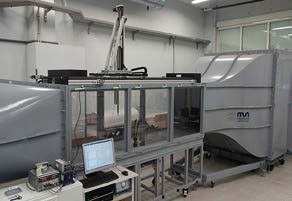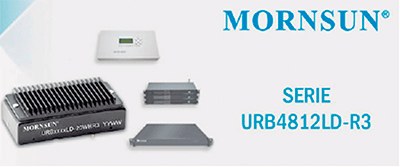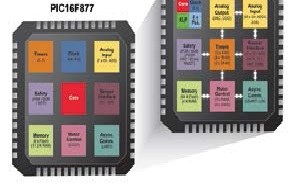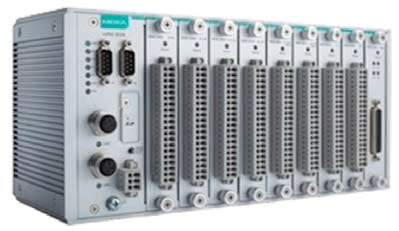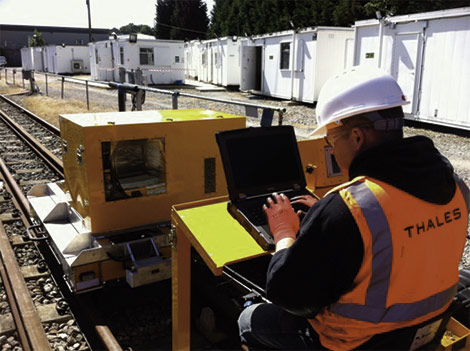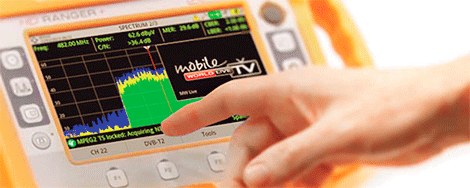“The great versatility of NI products has been essential to adapt to the needs of the project. The solution provides the system with an automated movement control integrated with the monitoring of the data acquired, thus meeting the objectives set at the beginning of the project.” – Iván Torrano, Mondragon University
The challenge
Develop a system for capturing and monitoring aerodynamic data combined with a 4-axis positioning control. The information is monitored in real time while it is stored for later analysis. The positioning of the speed sensor must be controlled in three directions and the model to be analyzed must rotate, thus varying the angle of incidence with respect to the direction of the wind.
The solution
Using the NI cRIO-9031 controller in conjunction with the SISU 4 1004-axis interface module has proven to be an effective solution for performing positioning system control. In addition, the use of a NI LabVIEW project architecture has allowed the integration of data acquisition carried out in a NI cDAQ-9174 chassis with motion control in the same graphical environment.
Introduction
Wind tunnels are the most common experimental technique in the field of aerodynamics and are used to study the behavior of a body under the action of the wind. There are numerous measurement systems that allow obtaining data on pressure, speed and the resistance forces exerted by the wind on the object of study. The correct positioning of both the speed and pressure sensors and the model itself is of vital importance to guarantee the repeatability and precision of the data obtained. The solution adopted using NI software and hardware provides robustness and reliability in the motion control system. In addition, the ease and speed in the set-up of the data acquisition equipment reduces the set-up times of each test.
Objectives
The main objective is to develop a system that meets two conditions: 1. Control positioning of the sensors and/or the model to study different positions and configurations quickly and accurately. 2. Monitor and record data from speed, pressure, temperature sensors and the dynamometric balance. Finally, it is intended to integrate these two functionalities in the same environment to facilitate the use of the acquisition and control system.
Description of the acquisition and control system
Figure 1 provides an overview of the wind tunnel. In the central part you can see the test area where the model is installed. In the upper part there is a 3-axis guidance system. Each axis is driven by a Nema 23 stepper motor with an integrated driver from the NI ISM 7400 series that allows positioning the speed sensor (Pitot probe or hot-wire anemometer) at any point (x,y,z). from space. In the lower part of the test area, a fourth motor drives a dividing plate that allows the model to be rotated at different angles of incidence. The dynamometric balance is mounted on the indexing plate, which measures the resistance forces transmitted through the model support.
Hardware
Figure 2 schematically shows the acquisition and control system. The NI cRIO-9031 embedded controller is responsible for real-time control of the motors together with the SISU 4 1004-axis interface module. Each motor is powered by an NI PS-12 power supply, and is connected to the SISU 1004 via terminals SISU RJ-45. Additionally, there is a 9174-slot NI cDAQ-4 chassis that connects via USB to the PC. To acquire the signals coming from the sensors that use the following modules; NI 9215 for the Pitot probe, NI 9201 for the torque balance, and NI 9219 for the RTD temperature sensor and anemometer.
Software
The following programs have been used: – NI LabVIEW: The project structure has allowed cDAQ and cRIO to communicate with the PC, generating a single graphical environment from which movement is controlled while results are monitored. The programming of the code through the use of a state machine allows the synchronization of the tasks. For example, Figure 3 shows the generated project in which different states are synchronized such as; Read the coordinate from a text file, move to said coordinate, data acquisition, etc. In this way, the process can be automated to carry out 2D velocity contours, boundary layer studies, measure the evolution of the wake turbulence developed by the object of study or any other sweep in space. – NI LabVIEW Real-Time and NI Lab-VIEW FPGA: These platforms are essential to compile the generated trajectories and perform real-time control and feedback of the motors. – NI SoftMotion: The library of programmed movements for the simplified development of the movement profile has been very useful for the development of predefined trajectories. It greatly facilitates the configuration of the axes, which means a simple set-up of the system. In addition, the option to simulate these trajectories in virtual Solidworks axes allows you to verify in advance that there are no collisions with the model or with the walls of the wind tunnel.
Conclusions
The great versatility of NI products has been essential to adapt to the needs of the project. The solution provides the system with an automated movement control integrated with the monitoring of the data acquired, thus fulfilling the objectives set at the beginning.


